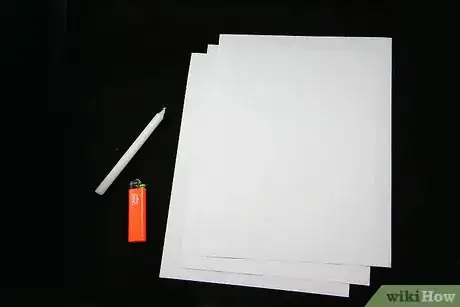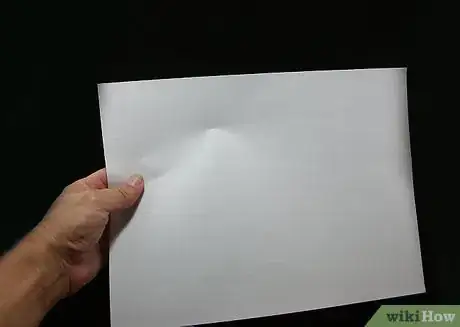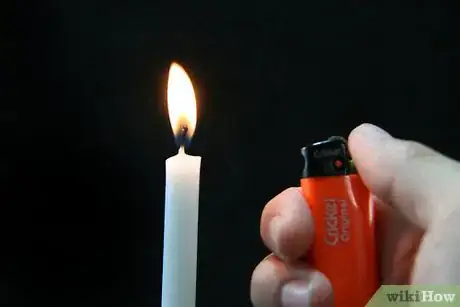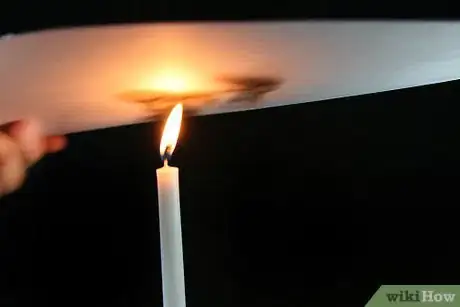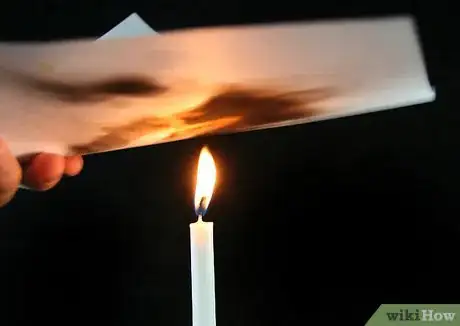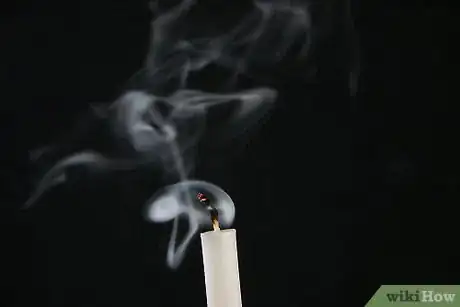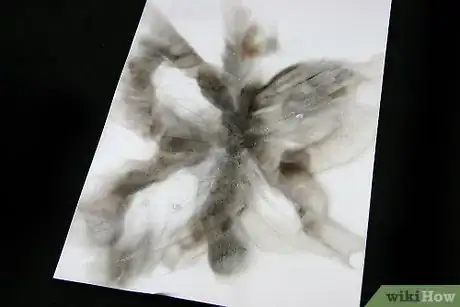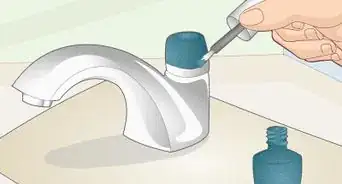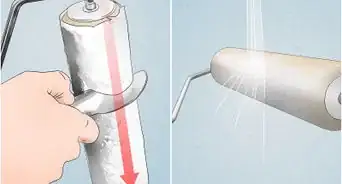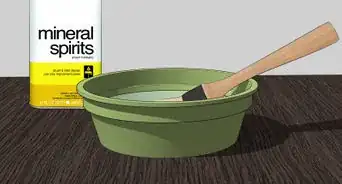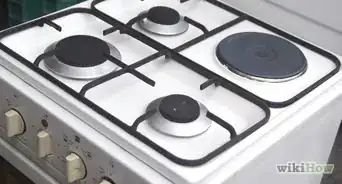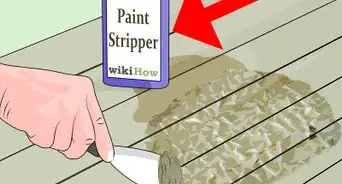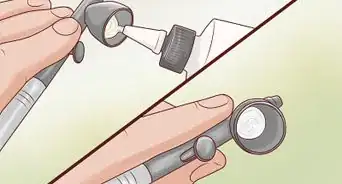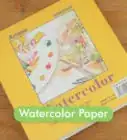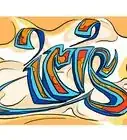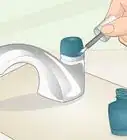X
wikiHow is a “wiki,” similar to Wikipedia, which means that many of our articles are co-written by multiple authors. To create this article, 25 people, some anonymous, worked to edit and improve it over time.
This article has been viewed 282,335 times.
Learn more...
Maybe you’ve painted before, but did you know you can paint with smoke? This art known as “fumage” has been practiced by many visionary artists, including well-known surrealist Salvador Dali. We’re here to teach you how to start using this delicate medium to create exciting new textures and patterns. Read on to learn how you can create your own smoke-based masterpiece.
Steps
-
1Protect your workspace. If you do not have a work area that you can afford to mark with wax drippings, lay out a covering (such as an old tablecloth) to catch the dripping wax.
-
2Prop up your board or paper (hereafter referred to generically as "canvas") so that you are looking up at it. You'll need to work from beneath the canvas most of the time, so you may want to hang it from an elevated position, but if you can manage to hold it with one hand, you can use your non-dominant hand to change its angle as the candle's flame moves across the surface.[1]Advertisement
-
3Light your candle. Slender candles work best, but feel free to experiment. It's helpful to keep a pillar candle lit nearby to quickly re-light the one in use.[2]
-
4Begin dragging the candle flame along the underside of the canvas. As you guide the candle just beneath the canvas, you will see dark shapes forming on the surface of your canvas.
-
5Vary the motions of your candle and the angle of the canvas. The best way to "learn" fumage is to experiment with it. See what effects you can get by using tilting the canvas or the candle slightly, or by moving the candle at different speeds or in different patterns of motion. For more information, see the "tips" section below.[3]
-
6Blow out the candle and spray the surface with fixative. When you are satisfied with your design, apply the fixative (a stabilizing or preserving agent, such as varnish) to keep it from smearing. Before you do so, you may wish to intentionally smear some of the soot marks with your hand, a brush, or some other implement.
-
7Experiment using fumage in combination with other media. Wolfgang Paalen, the father of fumage, quickly progressed toward using fumage as a catalyst for his artworks, the seed from which the whole work would spring forth. With the fumage work providing his starting point, he would then add layers of oil paint, for example, to fully express his artistic vision. You can apply other media to the canvas either before or after you apply the fixative.[4]
Advertisement
Community Q&A
-
QuestionWould it not burn the paper?
 Community AnswerNo, smoke alone will not burn it, as long as the heat source is kept a safe distance.
Community AnswerNo, smoke alone will not burn it, as long as the heat source is kept a safe distance.
Advertisement
Warnings
- Always be aware of how close the flame is to the surface. This is why it is best to work from below, or at an angle where the surface is always visible to you. Otherwise, you can easily burn the surface.⧼thumbs_response⧽
- Spray fixative in a well-ventilated area, away from all flames.⧼thumbs_response⧽
- Keep flammable items away from your work area.⧼thumbs_response⧽
- As always, when working with fire, be careful of flames as you run a risk of getting burned.⧼thumbs_response⧽
- Never attempt fumage without adult supervision.[5]⧼thumbs_response⧽
- To avoid fire or scorching, do not hold a flame to canvas for a long period of time. If you are using paper, you'll need to be especially careful.⧼thumbs_response⧽
Advertisement
Things You'll Need
- Fire extinguisher.
- Candles.
- A "canvas" or base of some sort: paper (at least 100 lb. weight, preferably heavier,) illustration/Bristol board, Masonite (gessoed to make the surface more receptive), wood, or fiberboard, etc.
- Fixative (Fixatives used for charcoal or pencil drawings are appropriate, and may be purchased at your local art supply store).
- Matches/lighter.
- Flame retardant floor covering/workbench.
References
- ↑ https://www.youtube.com/watch?v=CcG7BY6VU08
- ↑ https://www.youtube.com/watch?v=SfQYbu_bJXE
- ↑ https://www.youtube.com/watch?v=CcG7BY6VU08
- ↑ https://www.insidetherift.net/art/2017/3/24/interview-with-painter-steven-spazuk
- ↑ https://www.insidetherift.net/art/2017/3/24/interview-with-painter-steven-spazuk
About This Article
Advertisement
